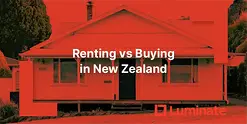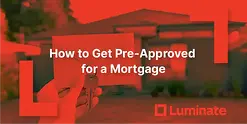Hidden Costs of Buying a Home (That First Timers Miss)
 By
Trent Bradley
·
13 minute read
By
Trent Bradley
·
13 minute read

Buying your first home is one of the biggest financial milestones you'll ever reach – exciting, nerve-wracking, and packed with emotions. Most first-home buyers spend months diligently saving their deposit and calculating what they can afford in mortgage repayments. But here's what catches many people off guard: the additional expenses that emerge throughout the buying process.
Quick Answer: The hidden costs of buying a first home in NZ typically total $8,000-$15,000 beyond your deposit. This includes legal fees ($1,500-$2,500), building inspections ($500-$900), LIM reports ($300-$450), moving costs ($1,500-$2,500), insurance, and a maintenance emergency fund ($2,000-$5,000).
Table of Contents
- The True Cost of Buying Your First Home: Complete Breakdown
- Legal Fees – Getting the Paperwork Right
- Builder's Report & Property Inspections – Your Safety Net
- Registered Valuation – Proving the Property's Worth
- LIM Report & Council Records – What You Need to Know
- Home Insurance – Required Before Settlement
- Mortgage Setup Fees – What Lenders Charge
- Rates & Utilities – Your Responsibilities Start Immediately
- Moving Costs – More Than Just Transport
- Maintenance & Repairs – Welcome to Homeownership
- Going Unconditional Too Early – The Costliest Mistake
- Frequently Asked Questions About First-Home Buyer Costs in NZ
- Your First-Home Buyer Cost Checklist
- Final Thoughts
Key Takeaways
- The real cost is $80k+ not $70k—first-home buyers typically budget their 10% deposit ($70k on a $700k home) but miss the additional $8,000-$15,000 in hidden costs, from legal fees to emergency maintenance funds, that hit before and after settlement
- Your $600 builder's report can save you $50,000—skipping the inspection to save money is false economy when hidden weathertightness issues, structural damage, or electrical hazards could cost tens of thousands to repair, and banks may refuse your loan if major problems emerge
- Going unconditional without written approval destroys deposits—removing your finance condition before receiving formal bank approval (not just pre-approval) means you'll forfeit your entire 10% deposit ($70,000 on a $700k home) if your loan falls through, with potential legal action on top
- Pre-purchase costs alone hit $3,200-$5,150—before you even get the keys, legal fees ($1,500-$2,500), builder's report ($500-$900), LIM report ($300-$450), and registered valuation ($600-$800) add up fast, and all must be paid regardless of whether you proceed with the purchase
- First-year homeownership costs $4,000-$9,000—council rates ($2,000-$4,000), home insurance ($1,000-$2,500), utilities setup, and your crucial maintenance emergency fund ($2,000-$5,000) hit immediately, with no landlord to call when the hot water cylinder fails at 11pm
- LIM reports expose deal-breakers before you commit—for $300-$450, you discover unpermitted renovations, missing Code Compliance Certificates, outstanding compliance orders, or hazard designations that could make your property uninsurable, unsellable, or require expensive retrospective consents
- Insurance activation on settlement day is non-negotiable—banks won't release loan funds without proof of full replacement cover starting the moment you take ownership, requiring quotes weeks in advance and careful sum insured calculations with your insurer
These "hidden costs" aren't actually hidden – they're just rarely talked about in the early stages of home buying. Yet they can be the difference between a smooth, stress-free purchase and an unexpected financial squeeze that leaves you scrambling.
At Luminate Financial Group, we guide first-home buyers across New Zealand through this process every day. Our goal is to help you avoid common financial traps by understanding exactly what to budget for from the very beginning. When you know what's coming, you can plan properly and buy with confidence.
This guide breaks down every additional cost you'll face when buying your first home, so nothing catches you by surprise.
The True Cost of Buying Your First Home: Complete Breakdown
Here's what you should realistically budget for beyond your deposit and mortgage repayments:
Essential Pre-Purchase Costs ($3,200 - $5,150)
- Legal fees: $1,500 - $2,500
- Builder's report: $500 - $900
- LIM report: $300 - $450
- Registered valuation (if required): $600 - $800
- Insurance setup and initial premium: $300 - $500
Settlement & Moving Costs ($1,800 - $3,500)
- Moving expenses: $1,500 - $2,500
- Lock changes and security upgrades: $200 - $500
- Utility connections and setup: $100 - $500
Ongoing First-Year Costs ($4,000 - $9,000)
- Council rates: $2,000 - $4,000 annually
- Home insurance: $1,000 - $2,500 annually
- Maintenance emergency fund: $2,000 - $5,000
- Utilities for first 3 months: $450 - $900
Total Additional Costs: $8,000 - $15,000+
This is on top of your deposit and mortgage repayments. For example, if you're buying a $700,000 home with a 10% deposit, you're looking at:
- $70,000 deposit
- $10,000-$12,000 in additional costs
- = $80,000-$82,000 total cash requirement
Let's break down each cost category in detail.
Legal Fees – Getting the Paperwork Right
Before anything becomes official, you'll need a lawyer or conveyancer to handle the legal side of your purchase. They perform essential tasks including:
- Reviewing your sale and purchase agreement
- Running title searches to confirm ownership
- Checking for any property encumbrances or restrictions
- Ordering and reviewing the LIM report
- Managing the settlement process and fund transfers
- Ensuring all conditions are properly satisfied
Typical Cost: $1,500 to $2,500, depending on the complexity of the transaction and property type.
The cost can increase if you're:
- Purchasing through a trust or company structure
- Buying a unit title or cross-lease property
- Dealing with complex title issues or multiple parties
- Requiring urgent or after-hours service
Luminate Tip: Request a comprehensive quote upfront that includes all potential disbursements (additional charges for searches, courier fees, and administrative costs). Some lawyers offer fixed-fee conveyancing, which provides cost certainty. Ask if they offer a payment plan where you pay in stages rather than all at once.
Builder's Report & Property Inspections – Your Safety Net
A property might look perfect during a viewing, but appearances can be deceiving. Hidden underneath could be:
- Weathertightness issues or active leaks
- Structural damage or foundation problems
- Electrical hazards or outdated wiring
- Plumbing defects
- Pest damage or rot
- Asbestos or other hazardous materials
A professional builder's report (also called a pre-purchase inspection) provides an objective assessment of the property's condition, identifying both current issues and potential future maintenance needs.
Typical Cost: $500 to $900 for a standard three-bedroom home. Specialist inspections like methamphetamine testing, detailed moisture analysis, or electrical surveys cost extra.
Why this matters: Many banks won't approve your loan if significant issues are discovered without a plan to address them. More importantly, a builder's report protects you from buying a property with expensive hidden problems.
What if issues are found? You have several options:
- Negotiate with the seller to fix the problems before settlement
- Request a price reduction to cover repair costs
- Walk away from the purchase if the issues are too severe
Luminate Tip: Don't skip this step to save money. A $600 inspection can save you from $50,000+ in unexpected repairs. Always attend the inspection yourself if possible – the inspector can explain issues directly and answer your questions on-site.
Registered Valuation – Proving the Property's Worth
Most of the time, banks use internal Automated Valuation Models (AVMs) to assess property values. However, in certain situations, they'll require a registered valuation – a formal assessment conducted by a licensed valuer.
When is a registered valuation required?
- You're borrowing more than 80% (less than 20% deposit)
- The property is being purchased privately or off-market
- You're buying off the plans or a new build
- The property is unusual (large land size, unique features, rural location)
- The bank's AVM shows insufficient or conflicting data
Typical Cost: $600 to $800, depending on property location, size, and urgency.
Important note: The valuation must be ordered through the bank's approved platform (such as CoreLogic or Valocity) and cannot be arranged independently. Your lender will coordinate this, but you'll typically pay the fee.
If the valuation comes in lower than your purchase price, you may need to:
- Increase your deposit to maintain the required loan-to-value ratio
- Renegotiate the purchase price with the seller
- Find alternative financing
LIM Report & Council Records – What You Need to Know
A Land Information Memorandum (LIM) is an official document from the local council that contains crucial information about the property, including:
- Building consents issued and their sign-off status
- Resource consent details
- Zoning information and permitted uses
- Known hazards (flooding, erosion, contamination)
- Rates arrears or outstanding invoices
- Code compliance certificates
- Any notices or orders affecting the property
Typical Cost: $300 to $450, depending on the council and turnaround time (standard vs. urgent).
Why it's essential: The LIM reveals whether building work was consented and properly signed off. Unpermitted work can:
- Reduce the property's value
- Make it difficult to insure
- Create issues when you eventually sell
- Require expensive remediation or retrospective consents
Red flags in a LIM:
- Building work without consents
- Consents that were never signed off (no Code Compliance Certificate)
- Outstanding compliance orders
- Land subject to hazard designations
Luminate Tip: Your lawyer will review the LIM, but ask them to explain anything that seems unusual. If significant issues emerge, you may need to renegotiate or reconsider the purchase. Some issues can be resolved, but others are deal-breakers.
Home Insurance – Required Before Settlement
Your lender will require proof of full replacement home insurance before they'll release any loan funds. This isn't optional – it's a condition of your mortgage.
What you need:
- Sum insured: Must cover the full replacement cost of the building (not the land value)
- Start date: Must commence on settlement day
- Named party: The bank will be listed as an interested party on the policy
How to arrange it:
- Get quotes from multiple insurers as soon as your offer is accepted
- Compare coverage, excesses, and exclusions carefully
- Confirm the sum insured with your insurer (they may require a building assessment)
- Arrange for the policy to start on settlement day
- Send confirmation to your lawyer and lender
Typical Cost: $1,000 to $2,500 annually, depending on:
- Location (higher in earthquake or flood-prone areas)
- Property age and construction type
- Sum insured amount
- Excess level you choose
Luminate Tip: Don't just choose the cheapest policy. Look at:
- What's included (are gradual damage, natural disaster, and subsidence covered?)
- The excess amounts for different claim types
- Whether the policy covers temporary accommodation if the home is uninhabitable
- Whether you need contents insurance if you're moving furniture from your rental
Mortgage Setup Fees – What Lenders Charge
While many major banks have moved away from upfront establishment fees, some costs may still apply depending on your lender and loan structure.
Potential fees include:
- Application or establishment fees: $0 to $500 (many banks waive these)
- Ongoing account fees: $0 to $10 per month
- Documentation fees: Charged by some non-bank lenders
- Break fees: If you exit a fixed rate early (can be thousands)
Typical Annual Cost: $0 to $500, depending on the lender and whether you're using special products like offset mortgages or construction loans.
Good news: Many lenders currently offer cashback incentives or contribution toward legal fees to attract new customers. These typically range from $1,000 to $4,000 depending on loan size.
Luminate Tip: Ask your mortgage adviser which lenders are offering cashback or fee waivers currently. These incentives can offset many of your purchase costs. However, don't choose a lender solely based on cashback if their interest rates are significantly higher – calculate the long-term cost difference.
Rates & Utilities – Your Responsibilities Start Immediately
From settlement day forward, you're responsible for all property costs. These bills start accumulating immediately, and some require payment in advance.
Council Rates
Annual Cost: $2,000 to $4,000+, depending on your property's location, size, and council valuation.
Councils typically bill quarterly or annually. At settlement, you'll often need to reimburse the seller for any rates they've prepaid beyond settlement date – your lawyer will calculate this adjustment.
Luminate Tip: Contact your council shortly after settlement to set up payment arrangements. Many councils offer direct debit plans that spread the cost across the year, making budgeting easier.
Utilities
Typical Monthly Cost: $150 to $300 combined for a typical household.
You'll need to arrange:
- Electricity: Contact a power company 1-2 weeks before settlement
- Gas: If the property has gas (not all do)
- Water: Usually included in rates but may be metered in some areas
- Internet and phone: Can take 1-2 weeks to connect, so book early
Some utility providers require bonds or upfront payment, particularly if you don't have an existing account history with them.
Moving Costs – More Than Just Transport
Moving expenses add up faster than most first-home buyers expect. Even a modest move involves multiple costs:
Professional Moving Services
Cost: $300 to $1,000+ depending on:
- Distance between properties
- Amount of furniture and belongings
- Whether you need packing services
- Stairs or difficult access
- Time of year (summer is peak season)
Additional Moving Expenses
- Rental property exit cleaning: $200 to $400 (often required to get bond back)
- Carpet cleaning: $100 to $250
- Rubbish removal: $100 to $300
- Storage costs: If there's a gap between moving out and settling
- New furniture or appliances: Many first-home buyers discover they need items they didn't have as renters (lawnmower, tools, outdoor furniture, additional bedroom furniture)
Security Upgrades
Lock changes: $200 to $500 is a wise investment. You never know how many copies of keys exist or who has them.
Realistic Moving Budget: $1,500 to $2,500 to move comfortably without cutting corners.
Luminate Tip: Book movers early, especially if you're moving during summer or on a weekend. Last-minute bookings cost significantly more. Consider asking friends to help with smaller items if you're trying to reduce costs – just budget for pizza and drinks!
Maintenance & Repairs – Welcome to Homeownership
Even well-maintained homes require ongoing work. Unlike renting, where the landlord handles repairs, every issue is now your responsibility and expense.
Common First-Year Costs
First-home buyers commonly face these expenses within the first 12 months:
- Hot water cylinder servicing or replacement: $150 to $3,000+
- Heat pump repairs or servicing: $100 to $1,500
- Plumbing issues: $150 to $1,000+ (blocked drains, leaking taps, burst pipes)
- Appliance repairs or replacements: $200 to $2,000
- Fence repairs or replacement sections: $500 to $3,000
- Gutter cleaning: $150 to $350
- Tree trimming or removal: $300 to $2,000+
- Garden maintenance equipment: $300 to $800 (lawnmower, tools, hose)
- Interior touch-ups: Paint, minor repairs, fixtures
The Emergency Fund Rule
Luminate Tip: Establish a home maintenance emergency fund of $2,000 to $5,000 and keep it separate from your everyday spending. Things will break at the most inconvenient times, and having funds ready reduces stress significantly.
Unexpected repairs are normal, not a sign you bought a bad house. Even new homes require maintenance. The key is being financially prepared rather than caught off guard.
Going Unconditional Too Early – The Costliest Mistake
This isn't a direct cost, but it can become the most expensive mistake first-home buyers make.
What Does "Going Unconditional" Mean?
When you make an offer, it typically includes conditions such as:
- Finance condition: The sale proceeds only if you secure loan approval
- Building inspection condition: You can withdraw if the inspection reveals major issues
- LIM condition: You can exit if the LIM shows concerning information
- Sale of existing property: If applicable
"Going unconditional" means removing these protective conditions, making your offer legally binding regardless of what happens next.
Why This Is Risky
Some buyers, eager to secure a property in a competitive market, remove conditions too quickly—sometimes before they've even received formal loan approval or completed their due diligence.
If something goes wrong after you go unconditional:
- Your finance falls through: You could lose your deposit (typically 10% of purchase price) and potentially be sued for damages
- Major issues are discovered: You're still legally obligated to complete the purchase
- You change your mind: You'll forfeit your deposit and face potential legal action
The Safe Approach
Always:
- Wait until you have written, formal loan approval from your bank – not just pre-approval
- Complete and review your building inspection report
- Receive and review your LIM report with your lawyer
- Have insurance arranged and ready to activate
- Consult both your lawyer and mortgage adviser before removing any conditions
Never:
- Remove conditions under pressure from the real estate agent
- Assume pre-approval means your loan is guaranteed
- Go unconditional without understanding the full picture
Luminate Tip: Pre-approval and formal approval are different. Pre-approval is an indication based on your circumstances; formal approval means the bank has fully assessed both you and the property and committed to lending. Always wait for formal approval before going unconditional on your finance condition.
Frequently Asked Questions About First-Home Buyer Costs in NZ
How much should I budget for hidden costs when buying a first home in NZ?
Budget between $8,000 and $15,000 for all additional costs beyond your deposit and mortgage. This includes legal fees ($1,500-$2,500), building inspection ($500-$900), insurance setup, LIM reports ($300-$450), moving costs ($1,500-$2,500), and a maintenance contingency ($2,000-$5,000).
Do I need a builder's report to buy a house in New Zealand?
While not legally required, a builder's report is highly recommended and sometimes required by lenders. It costs $500-$900 and can save you tens of thousands by identifying structural issues, weathertightness problems, or maintenance needs before you commit to purchase.
What is a LIM report and do I need one?
A Land Information Memorandum (LIM) is a council report showing building consents, zoning restrictions, and compliance issues for a property. It costs $300-$450 and is essential for understanding any legal or structural risks. Most lawyers and lenders strongly recommend getting one.
When do I need to arrange home insurance?
You must have full replacement home insurance in place before your loan settles. Contact insurers as soon as your offer is accepted to get quotes and arrange cover. Your bank won't release funds without proof of insurance.
Can I negotiate who pays for some of these costs?
Some costs like LIM reports and building inspections are typically paid by the buyer, but you can sometimes negotiate with the seller to contribute toward repairs identified in the builder's report. This is more common in buyer's markets or if significant issues are discovered.
What happens if I go unconditional before my finance is approved?
If you remove your finance condition before getting formal bank approval and your loan falls through, you could lose your deposit (typically 10% of the purchase price) or be legally obligated to complete the purchase without financing. Always wait for written approval before going unconditional.
Do I need a registered valuation or can the bank use an automated one?
Banks often use Automated Valuation Models (AVMs) for low-risk loans with 20%+ deposit. However, if you have less than 20% deposit, are buying privately, purchasing off the plans, or the property is unusual, the bank typically requires a registered valuation costing $600-$800.
How much should I set aside for emergency repairs after moving in?
Financial advisers recommend keeping $2,000-$5,000 as a home maintenance emergency fund in your first year. Common unexpected costs include hot water cylinder repairs, plumbing issues, appliance replacements, and urgent weatherproofing work.
Your First-Home Buyer Cost Checklist
Use this checklist to ensure you've budgeted for everything and completed all necessary tasks:
Before Making an Offer
- ☐ Deposit savings ready (5-20% of purchase price)
- ☐ Pre-approval obtained from lender
- ☐ Budget confirmed for legal fees ($1,500-$2,500)
- ☐ Funds set aside for building inspection ($500-$900)
During Due Diligence Period
- ☐ Building inspection booked and completed
- ☐ LIM report ordered ($300-$450)
- ☐ Registered valuation arranged if required ($600-$800)
- ☐ Insurance quotes obtained (2-3 providers)
- ☐ Lawyer reviewing sale and purchase agreement
Before Going Unconditional
- ☐ Finance formally approved in writing
- ☐ Building report reviewed with no deal-breakers
- ☐ LIM report shows no major compliance issues
- ☐ Home insurance arranged and ready to activate
- ☐ Settlement date confirmed with lawyer
Before Settlement Day
- ☐ Home insurance activated (settlement date)
- ☐ Power, gas, and water accounts set up
- ☐ Internet and phone connection arranged
- ☐ Moving company or truck booked
- ☐ Final walkthrough completed
After Settlement
- ☐ Locks changed ($200-$500)
- ☐ Emergency maintenance fund established ($2,000-$5,000)
- ☐ Council rates payment plan set up
- ☐ Home maintenance schedule created
Final Thoughts
Buying your first home involves significantly more than just saving a deposit and securing a mortgage. The additional costs outlined in this guide—totaling $8,000 to $15,000 on average—are real, common, and frequently underestimated by first-time buyers.
However, these costs don't have to derail your plans or create financial stress. With proper planning, realistic budgeting, and expert guidance, you can navigate the process smoothly and confidently.
The key is knowing what's coming. When you understand the full picture from the start, you can:
- Save the right amount (not just for the deposit, but for all costs)
- Time your purchase appropriately
- Avoid nasty financial surprises
- Make informed decisions at every stage
- Enter homeownership feeling prepared and confident
At Luminate Financial Group, we specialize in guiding first-home buyers through every aspect of the purchase process—not just the mortgage, but the complete financial strategy. We help you understand exactly what you'll need to budget for, when costs will arise, and how to structure your finances to handle everything comfortably.
Ready to Get Started on Your First Home Journey?
Book a free First-Home Buyer Strategy Session with Luminate.
We'll help you:
- Calculate your total cash requirement (deposit + all additional costs)
- Review your current financial position and savings capacity
- Check eligibility for KiwiSaver withdrawal and HomeStart Grant
- Get pre-approved so you know exactly what you can borrow
- Create a realistic timeline and savings plan
- Understand which lenders offer the best terms for your situation
Don't let hidden costs catch you off guard. Get expert advice and buy your first home with complete confidence.
Contact Luminate Financial Group:
📞 Call 0800 333 400
📧 Email askus@luminate.co.nz
🌐 Visit luminate.co.nz
Your journey to homeownership starts with understanding the complete picture. Let's make sure you're fully prepared for every step ahead.

Trent Bradley
Trent Bradley is a New Zealand financial advisor specializing in property-backed finance and investment consulting. With over 26 years of experience running his mortgage broking business, he has helped wholesale investors access high-yield property-backed loan opportunities. For the past 12 years, Trent has led Luminate Finance, a New Zealand finance company dedicated to connecting investors with secure property investment solutions.























